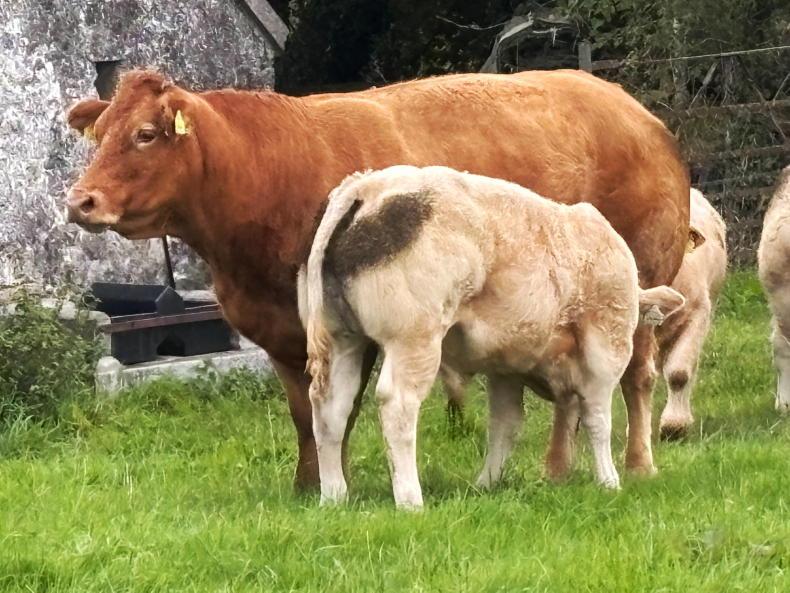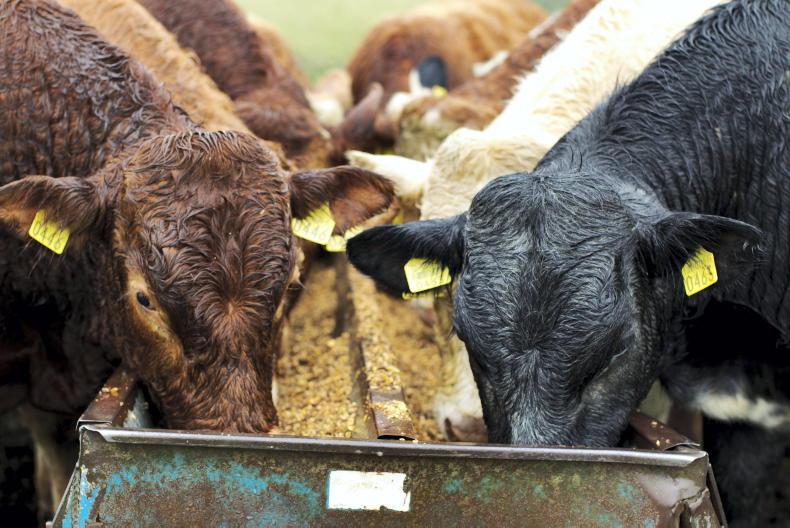The actions for the 2025 National Beef Welfare Scheme were confirmed this week by Martin Heydon, Minister for Agriculture, Food and the Marine. The actions are the same as those reported in recent months by the Irish Farmers Journal, with a repeat of the 2024 scheme actions and the addition of new optional actions, including silage testing and faecal egg testing.
This means that the core element of the scheme remains mandatory meal feeding of calves pre- and post-weaning. The payment for this action is €35/eligible calf, as summarised in Table 1. Vaccination returns as an optional action for 2025 and participants, or farm advisory system (FAS) advisers, must opt to select this action at application stage.
The two vaccination options available to farmers are clostridial vaccination and pneumonia vaccination. Participants will receive a payment of €15/eligible calf for completing this task. A second new set of optional actions has been added to the 2025 scheme, offering farmers the chance to draw down an additional support payment of €25/calf. Here participants will have to opt to complete faecal egg testing or silage testing.
Eligible calves
The maximum payment will be based on the number of calves born from 1 July 2024 to 30 June 2025, with an upper payment limit of 45 head. This is an increase of five calves on the 2024 scheme. To be eligible for payment a calf must be born on the farm to an eligible suckler cow. This is defined as a cow which belongs to a beef breed or is sired by a beef breed bull, is in the ownership and possession of the applicant and maintained on the holding, is part of a herd intended for rearing calves for meat production and rears a calf by suckling. The cow must also be inseminated either through natural service or artificial insemination by a bull of a beef breed.
An eligible calf must satisfy the breed criteria outlined above and also have been tagged and registered with the Department’s Registration Agency within 27 days of birth. Failure to register a calf within 27 days will result in the animal being ineligible for payment. Calves that have left the holding prior to the opening of the scheme remain eligible provided actions have been completed
Opening date
The scheme will open in mid-August, similar to recent years. The reason for the scheme not opening until August is for administration purposes.
Delaying the opening of the scheme until this date allows the Department to base the online application portal on the number of eligible animals on which a herd’s potential maximum payment will be based. It is expected that applicants will at this stage be able to select the number of calves on which optional actions will be completed upon, with the mandatory meal feeding action setting the limit for optional actions. This facility in the 2024 scheme allowed some farmers that had moved summer- or autumn-born weanlings off the farm to complete the optional action on the remaining animals.
Spotlight on actions
In announcing the scheme the minister outlined that the terms and conditions will be released on the Department’s website in advance of the scheme opening. With the minister also stating that “this year’s enhanced scheme retains the same measures from last year” and that he wanted to give “certainty and predictability” to participants, it is reasonable to assume that the terms and conditions will remain broadly the same.
Meal feeding
The terms and conditions of the 2024 scheme stated that participants must introduce meal feeding for a period of four weeks pre-weaning and two weeks post-weaning to reduce the stress on calves at weaning time. Calves must be supplemented with compound feeding stuffs containing appropriate minerals and vitamins.
It added that “if straights (feed materials) are being fed, participants should consult their adviser or nutritionist to ensure that a correct level of nutrition is being achieved. Straights (feed materials) must be supplemented with a suitable complementary mineral feeding stuff. If two or more straights are being mixed together on-farm, for example using a mixer wagon or loading shovel, then participants must register with the Department as a home-mixer”.
With regard to records, “participants must record the date of weaning of each animal that is being submitted for payment under this action. Where groups of calves are weaned on different dates, record the different weaning dates for each group. Recommended daily feeding allowance for meal feeding is 1kg/ animal/day for a period of four weeks pre-weaning and 2kg/animal/day for two weeks post-weaning”.
Vaccination protocols
If this action is selected at application stage, participants must implement a vaccination programme against clostridial diseases and/or calf pneumonia in suckler calves and record details of the vaccination. The exact recommendations regarding pneumonia vaccination were not prescriptive in 2024.
The terms and conditions state “farmers should select the most appropriate product for their holding and circumstances and should comply with the manufacturer’s recommendations regarding the relevant product.
“Where appropriate, it is advised that participants should consult with their veterinary surgeon for the most suitable vaccination programme for their specific farm. A record must be kept by each participant in this option of the purchase and use of vaccines. For a vaccine to work properly, you must follow the vaccination programme for the product being used, and allow the time required for the onset of immunity”.
The recommendation relating to clostridial vaccination was as follows:
“Clostridial vaccines consist of a combination vaccine covering a range of clostridial diseases with a primary course of two injections of 2ml doses given four to six weeks apart. Calves can be vaccinated from two weeks of age. Farmers should select the most appropriate product for their holding and circumstances and should comply with the manufacturer’s recommendations regarding the relevant product.
“Where appropriate, it is advised that participants should consult with their veterinary surgeon for the most suitable vaccination programme for their specific farm. A record must be kept by each participant in this option of the purchase and use of vaccines”.
Silage and faecal testing
There are no exact specifications known about the requirements for silage testing or faecal testing other than information from farm organisations. They state that the measure will include either three silage samples or two faecal egg tests.
The Irish Farmers Journal understands that faecal egg tests can be carried out across animal types which removes time specific constraints for farmers that have moved weanlings off the farm.










SHARING OPTIONS